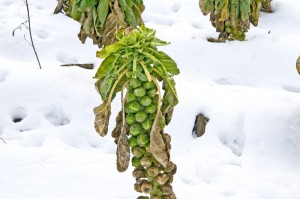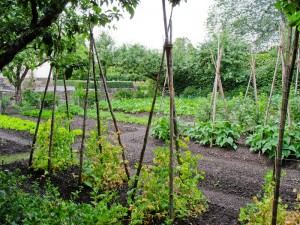This is an ongoing series, Part 1 is here, Part 2 is here.
As a green thumb you need to know what you can plant, when you can plant it, and how to give certain plants special care if the growing zone is not quite right for it. Each plant has its own specific requirements some are pickier than others, and some very hardy and can tolerate just about anything. Learning what you can plant is only one part of the equation, you must also learn when to plant it.
Planting Zones
There are several planting zones in the US, Each of these zones is denoted by a number, which can tell you when your first and last frost dates are, as well as how cold it will get, and a number of other important bits of information that will dictate what you can and cannot plant in your area. Plants are often labeled with zones, to help you determine what will best grow in your garden. You can get your planting zone information with this link. http://planthardiness.ars.usda.gov/PHZMWeb/ This link goes directly to the USDA site and gives you informaiton on an interactive map that can help you to determine exactly what your high and low temps are, and when your frost dates will be.
Dealing with Frost
Frost is one of the biggest killers of plants and if the frost is hard enough it can kill just about anything you put out. Some plants can handle mild to moderate frost, and can be planted earlier in the year. Many of the greens, especial kale, broccoli, cauliflower, and peas are all examples of plants that can be planted earlier in the year. Some of these plants count on the cooler weather in order to be able to produce a good crop, but we will talk about that later.
A number of plants must be planted after all danger of frost has passed, including squash, tomatoes, corn, beans, and to a lesser extent potatoes and carrots. Many of these plants however CAN be planted before the frosts are gone for the year, you simply must protect them from the frost and cold weather. Row covers, milk jugs, and even newspaper can cover plants at night to protect them from frost, and be easily removed in the morning to get the daytime sun.
It is important to keep in mind that some plants need warm weather to germinate and grow, so if the weather is still too cold you may be wasting your time and money by planting them. Tomatoes need warm conditions, but many people will construct cold frames around their tomatoes, or use the Walls of Water like these available at Amazon that have become popular to keep their tomatoes warm enough and give them a head start on the season.
Planting for the Right Season
Some plants are considered warm weather crops whereas others are considered cool weather crops. The difference is in the temperatures they need to grow and produce food. Some plants need warm days and nights both in order to produce, melons are one of the most particular plants in this regard and generally cannot be grown in many of the northern states without help. Not only are the nights too cold but the season can be too short. Sweet potatoes are also on the list of crops that can be grown up north with the right efforts, but generally are best grown where there are warmer nights.
Cool Season Crops Warm Season Crops There are certain vegetable plants that can be planted a second time during midsummer for a fall crop. Most of these plants are early maturing or prefer cooler weather so are well suited to a second planting. Keep in mind that if your growing season is short, you will not be able to plant warm season crops a second time. They must have enough time to make it to maturity before the cold weather hits. This second planting is a good strategy for cool weather crops that you might have missed planting in the spring. It is also a great way to extend your harvest. Some crops such as kale, cabbage, and Brussels sprouts can grow well into the late fall and winter. Possible Candidates for Midsummer Planting Before buying seeds and plants find out how long your growing season is, this figure is going to be different for cool and warm season crops. The most important dates will be your last frost in the spring, and first frost in the fall. Keep in mind that the number of days required for harvest is approximate and dependent on ideal conditions. If your soil is not good, you do not get enough sun, too much rain, or your evenings are cold, plants will grow slower. Try to take any of this into account as you decide what varieties of vegetables you will try in your garden. One mistake I made one year, when I was new to a particular garden, is I did not take into account that when the sun started to move lower in the horizon, that my garden got more shade than it did at midsummer. This mistake cost me a large portion of my second harvest. These are the types conditions you must keep in consideration when you plan your garden, buy your seeds and plants, and plant. © Can Stock Photo Inc. / sophysweden © Can Stock Photo Inc. / Jochen
Affected By Frost
Growing Seasons
 Finally you must take into consideration how long your growing seasons are if you want to make the most of your garden. This is really something you have to consider when buying your plants and seeds. While those big beefsteak tomatoes may look wonderful if your growing season is too short and your nights are too cool chances are good you won’t get much of a harvest from them. The same is true for corn, melons, and squash.
Finally you must take into consideration how long your growing seasons are if you want to make the most of your garden. This is really something you have to consider when buying your plants and seeds. While those big beefsteak tomatoes may look wonderful if your growing season is too short and your nights are too cool chances are good you won’t get much of a harvest from them. The same is true for corn, melons, and squash.



Leave a Reply